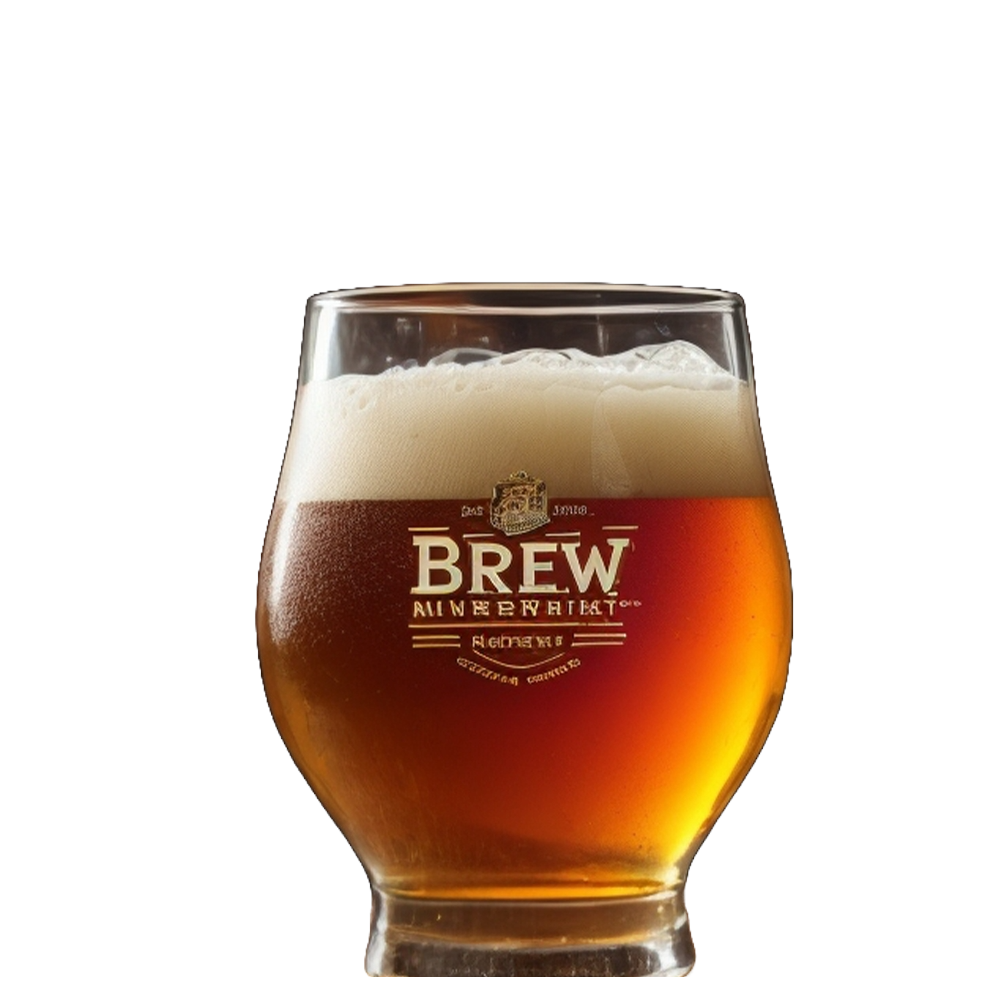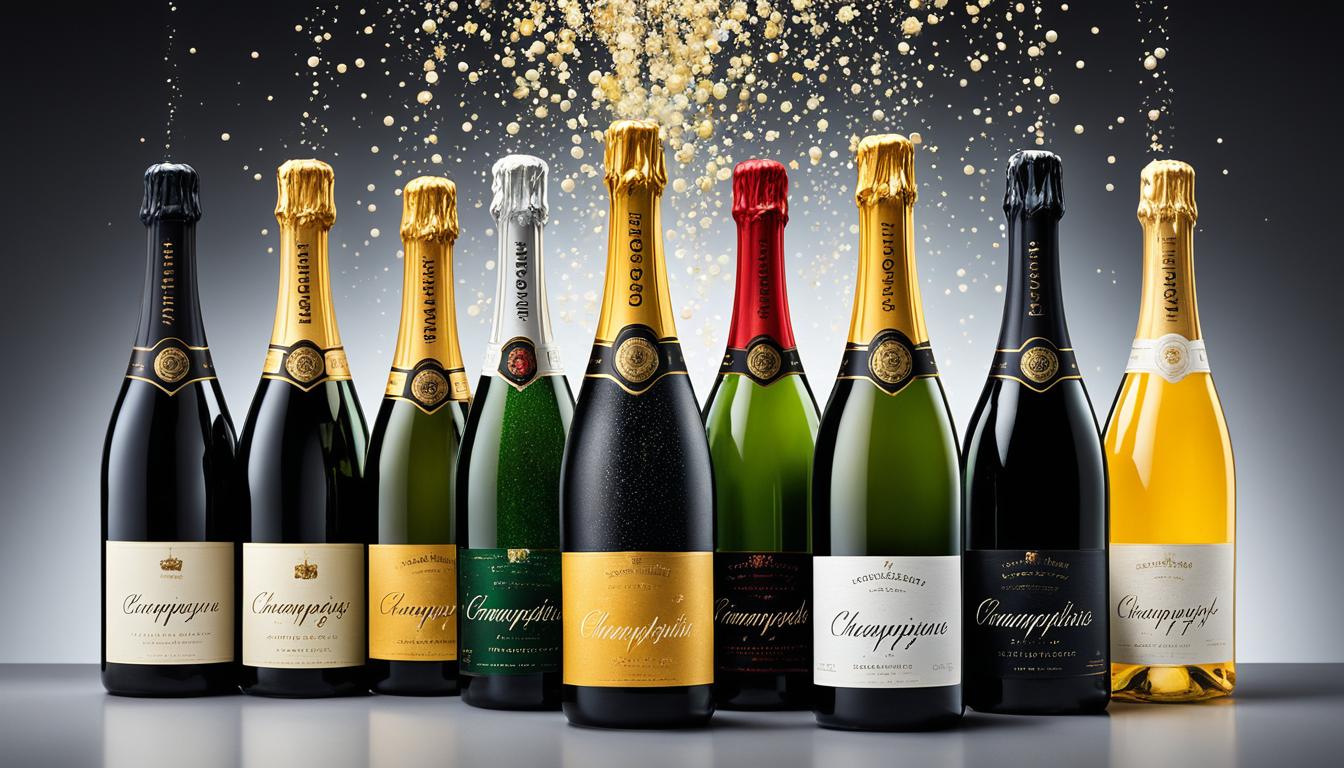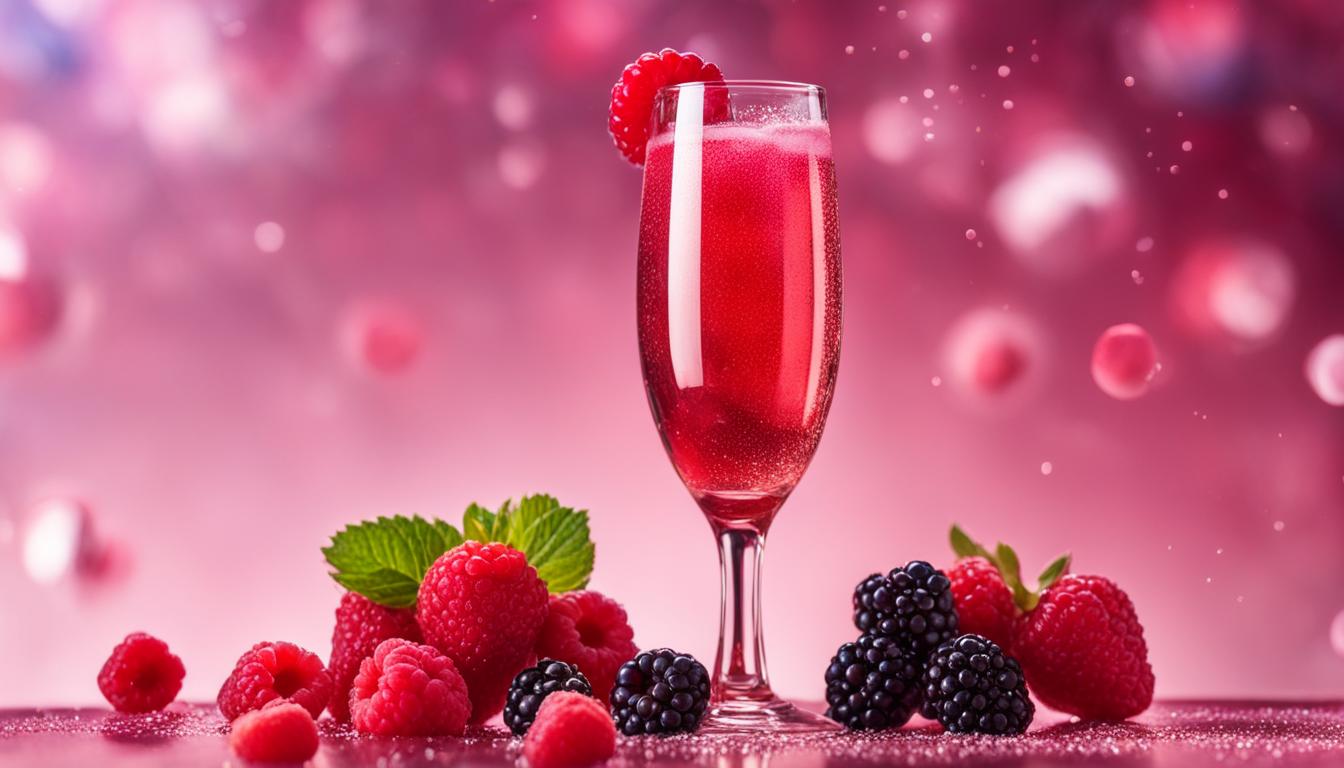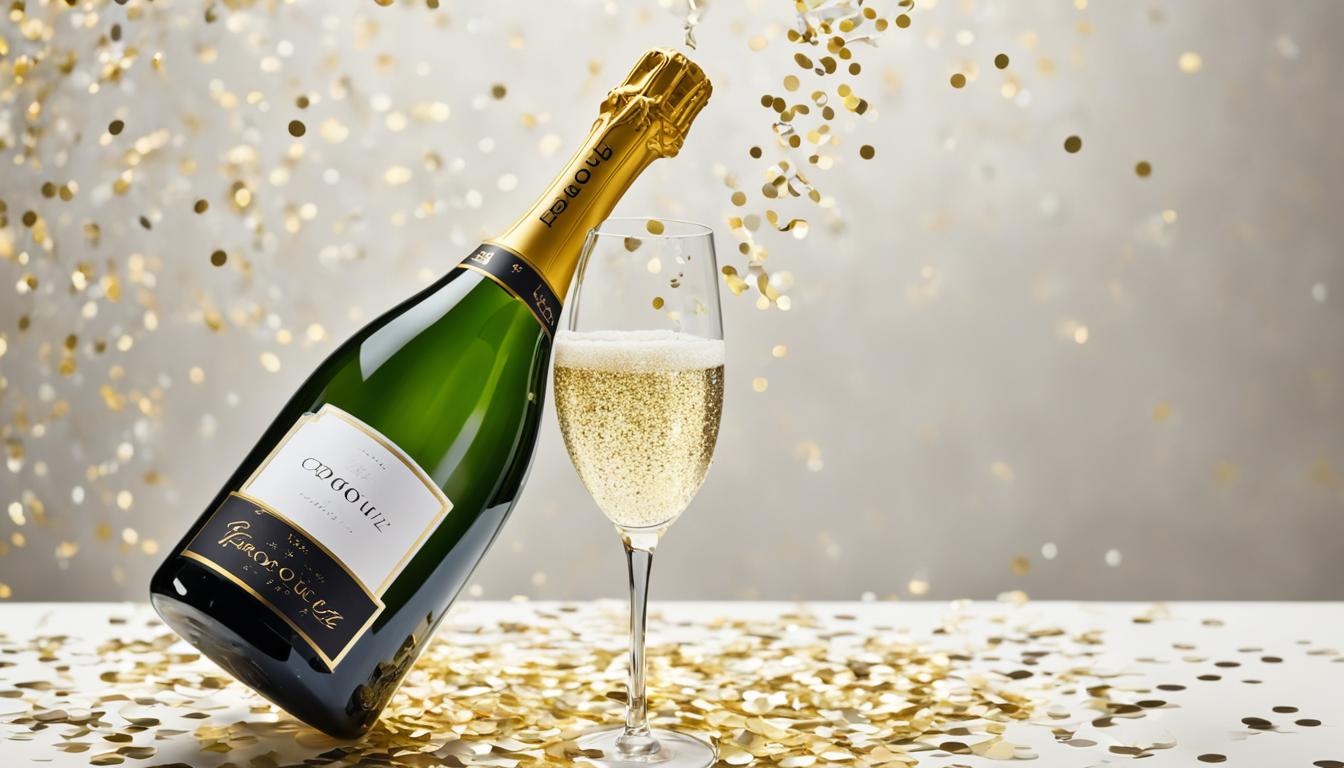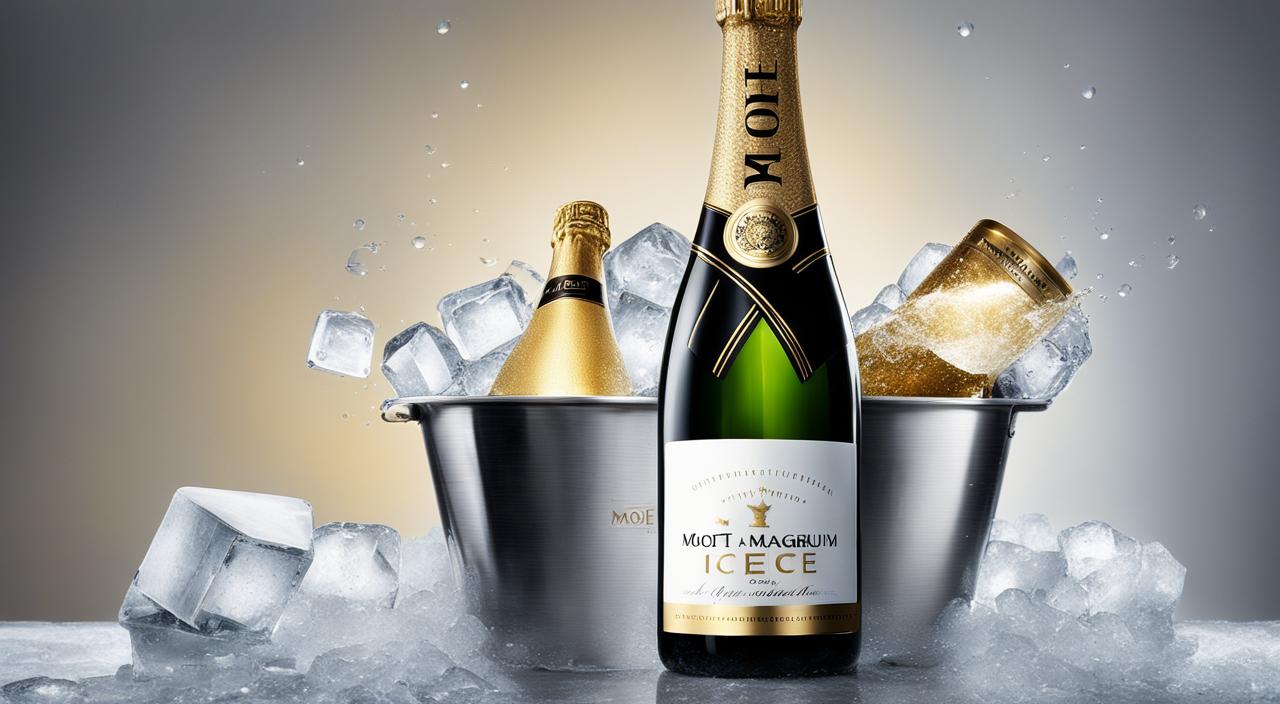Sparkling wine is a diverse category that encompasses a wide range of styles and varieties. From the iconic Champagne to the refreshing Prosecco, there is a sparkling wine for every palate and occasion. In this comprehensive guide, we will explore the different types of sparkling wine and their production methods. Whether you prefer a dry and complex Champagne or a sweet and fruity Prosecco, this guide will help you navigate the world of bubbly wines and discover your new favorite pour.
Key Takeaways:
- Sparkling wine is a diverse category that offers something for everyone.
- There are various production methods used to create sparkling wine, resulting in different levels of carbonation and complexity.
- Champagne is the most famous and symbolic sparkling wine, often associated with celebrations.
- Sparkling wine has a rich cultural and historical significance.
- From dry and crisp to sweet and fruity, there is a sparkling wine to suit every palate.
Understanding Sparkling Wine and Its Production Techniques
Sparkling wine is a fascinating category of wine characterized by its effervescence and complexity. The production techniques used to create sparkling wines play a crucial role in the development of their distinct characteristics. In this section, we will delve into the essence of sparkling wine, explore the ancestral method, the traditional method, and the tank method, showcasing the craftsmanship behind each. With a deeper understanding of production techniques, you’ll gain a newfound appreciation for the diverse world of sparkling wines.
The Essence of Sparkling Wine: Carbonation and Complexity
What sets sparkling wine apart from other styles is its carbonation, which creates the characteristic bubbles that dance on the palate. Carbonation can be achieved through different methods, each contributing to the wine’s complexity. The production techniques used in sparkling wine production allow for the retention of natural effervescence, resulting in a refreshing and lively tasting experience.
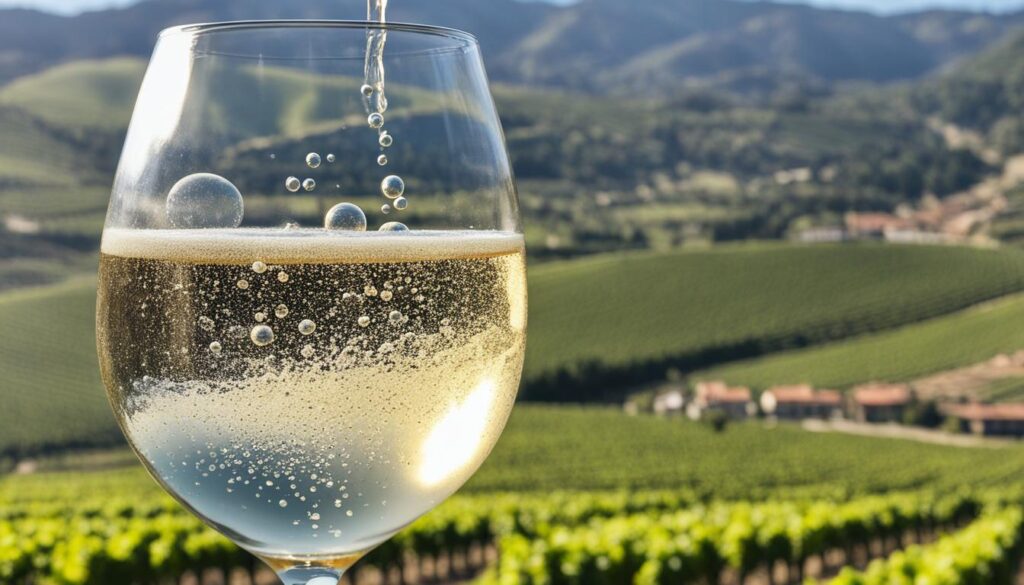
Ancestral Method: Exploring Pétillant-Naturel Wines
Ancestral method, also known as méthode ancestrale, is one of the oldest sparkling wine production techniques. This method involves bottling the wine during fermentation, capturing the natural carbon dioxide produced by yeast. The wine continues to ferment in the bottle, creating a gentle fizz and unique flavors. Pétillant-naturel (Pét-Nat) is a type of sparkling wine produced using the ancestral method, known for its rustic and lively character.
Traditional Method: The Craft Behind Champagne and Cava
The traditional method, also called méthode traditionnelle or méthode champenoise, is synonymous with the production of Champagne and Cava. In this method, the base wine is fermented once, and then a mixture of sugar and yeast, known as the liqueur de tirage, is added to the bottle to induce a second fermentation. The wine is aged on the lees, developing complexity and a creamy mouthfeel. After aging, the lees are removed through a process known as disgorgement, and a small amount of liqueur d’expédition is added to adjust sweetness before final corking.
Tank Method: The Prosecco Approach and Its Variants
The tank method, also known as the Charmat method or cuve close, is commonly used in the production of Prosecco and other sparkling wines. In this method, the base wine undergoes a second fermentation in a pressurized tank, where sugar and yeast are added. The wine is then filtered and bottled under pressure, preserving its youthful and fruity flavors. The tank method is known for producing sparkling wines that are vibrant, fresh, and approachable.
| Production Method | Wine Styles | Main Regions |
|---|---|---|
| Ancestral Method | Pétillant-Naturel (Pét-Nat) | Various regions worldwide |
| Traditional Method | Champagne, Cava, Crémant | Champagne, Catalonia, France, other European countries |
| Tank Method | Prosecco, Asti, Lambrusco | Italy, Spain |
The Cultural Impact and Historical Significance of Bubbly Wines
Types of Sparkling Wine have had a profound cultural impact and hold significant historical significance. Among all sparkling wines, Champagne stands out as the iconic symbol of celebration, synonymous with luxury and special occasions. Its effervescent bubbles and complex flavors have made it the go-to choice for toasts and festivities.
Champagne: The Iconic Symbol of Celebration
Champagne has a long-standing association with joyous moments and milestones. It has become a cultural symbol that represents elegance, success, and indulgence. From weddings and anniversaries to New Year’s Eve celebrations, Champagne has been a part of countless memorable events, leaving a lasting impression on those who savor its delicate effervescence.
The Story of “Vins du Diable” and Evolution of Sparkling Wines
One fascinating chapter in the history of sparkling wines is the story of “Vins du Diable.” In the 16th century, winemakers in the Limoux region of France discovered a secondary fermentation process that resulted in naturally carbonated wines. This accidental discovery laid the foundations for the evolution of sparkling wines, leading to the production techniques used today.
“Vins du Diable” or “Wines of the Devil” earned their name due to the misconception that the bubbles were a result of diabolical intervention. Little did they know that it was simply the wonders of fermentation at work.
Over the centuries, sparkling wines underwent various transformations and advancements in production methods. From the ancestral method to the traditional method and the tank method, each technique contributed to the refinement and complexity of sparkling wines, capturing the hearts of wine enthusiasts around the world.
Global Influence: Sparkling Wine’s Expansion Beyond France
While Champagne remains the pinnacle of sparkling wines, its influence has extended far beyond the borders of France. Other wine regions, such as Italy’s Prosecco, Spain’s Cava, and various New World producers, have embraced the art of crafting sparkling wines, spreading the joy of effervescence to a global audience.
Today, sparkling wines from around the world continue to make an impact, enriching celebrations and elevating everyday moments with their lively bubbles and unique flavors. The global influence of sparkling wine serves as a testament to its enduring popularity and the delight it brings to wine lovers everywhere.
| Sparkling Wine | Country |
|---|---|
| Champagne | France |
| Prosecco | Italy |
| Cava | Spain |
| Crémant | France (outside Champagne) |
| Sparkling Shiraz | Australia |
| California Sparkling Wine | United States |
Types of Sparkling Wine: Discovering Varieties for Every Palate
The world of sparkling wine offers a wide range of options to suit every palate. Whether you prefer a crisp and refreshing sparkling white wine, a fruity and elegant sparkling rosé, or a sweet and indulgent bubbly, there is a type of sparkling wine that will delight your taste buds.
One popular category of sparkling wine is sparkling white wines. These wines are known for their bright acidity, refreshing flavors, and lively bubbles. Some examples include Champagne, Prosecco, Cava, and Asti Spumante. Each of these sparkling white wines has its own unique characteristics and production methods, making them versatile and enjoyable for any occasion.
Another delightful option is sparkling rosé wines. These wines are made by allowing the grape skins to remain in contact with the juice for a short period, resulting in a beautiful pink color and delicate flavors. Sparkling rosé wines can range from bone-dry to slightly sweet, offering a diverse array of styles to choose from. Some popular sparkling rosé wines include Rosé Champagne, Cava Rosado, and sparkling Rosé from California.
For those with a sweet tooth, sweet sparkling wines are an ideal choice. These wines are perfect for dessert pairings or as a delightful aperitif. They offer luscious flavors and a touch of sweetness that can complement a variety of dishes. Some notable sweet sparkling wines include Moscato d’Asti, Brachetto d’Acqui, and Demi-Sec Champagne.
If you prefer a drier style, there are plenty of options for you as well. Dry sparkling wines provide a crisp and clean taste experience with minimal residual sugar. Champagne, Cava Brut Nature, and Brut Prosecco are excellent examples of dry sparkling wines that offer complexity, elegance, and a refreshing finish.
When it comes to specific regions, Italian sparkling wines are known for their diverse styles and flavors. Prosecco, Franciacorta, and Lambrusco are some of the popular Italian sparkling wines that have gained international recognition for their quality and unique characteristics.
France is renowned for Champagne, the iconic sparkling wine that is synonymous with celebration and luxury. Champagne’s traditional method of production and strict quality standards have made it the benchmark for sparkling wines worldwide.
Spain is another country that has made its mark in the sparkling wine realm. Spanish sparkling wines, known as Cava, are made using the traditional method and offer incredible value for money. They showcase vibrant flavors and fine bubbles, making them an excellent choice for any occasion.
Finally, California sparkling wines have gained popularity for their high-quality production and range of styles. From traditional method sparkling wines to innovative cuvées, California offers a diverse range of options for sparkling wine enthusiasts.
With such a wide array of options to choose from, exploring the world of sparkling wine is an exciting journey that promises a delightful experience for every palate.
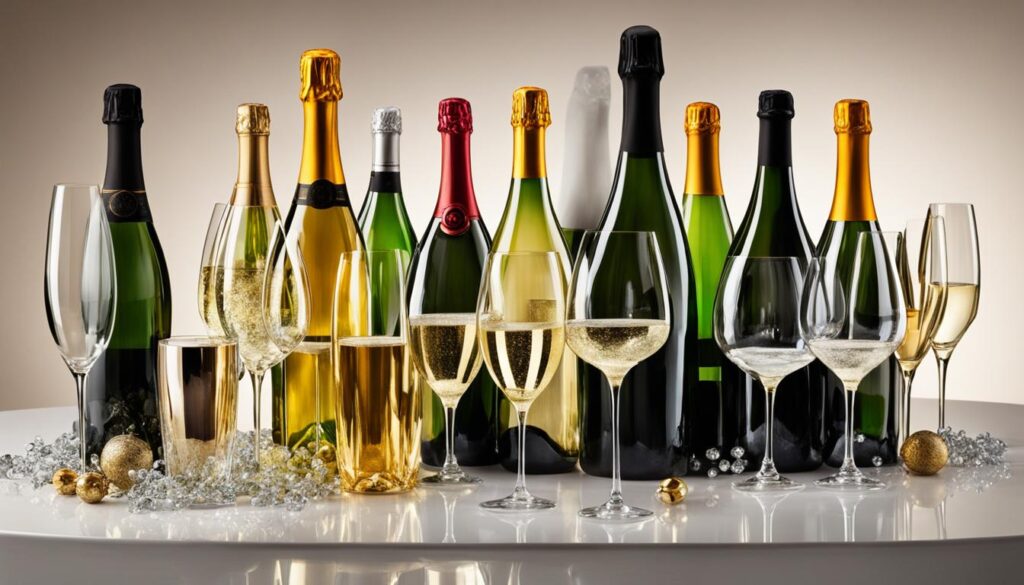
Conclusion
Sparkling wine is a versatile and exciting category that offers a world of flavors and experiences. Whether you’re celebrating a special occasion or simply indulging in a glass of bubbly, there are a variety of sparkling wine types to suit your preferences.
For those who appreciate elegance and complexity, Champagne is the go-to choice. Its traditional production method and distinctive flavors make it a symbol of celebration and sophistication. If you prefer a lighter and fruitier option, Prosecco provides a refreshing and effervescent experience that pairs perfectly with a sunny afternoon.
No matter your taste, it’s important to choose the right sparkling wine for the occasion. Consider the level of sweetness, the color (white or rosé), and the country of origin when making your selection. Whether you opt for a French Champagne, an Italian Prosecco, or a Spanish Cava, each sparkling wine offers its own unique character and charm.
So, next time you’re in search of a festive and delightful drink, explore the diverse world of sparkling wine and embark on a sparkling journey that will tantalize your taste buds and create memorable moments.
FAQ
What are the different types of sparkling wine?
The different types of sparkling wine include Champagne, Prosecco, Cava, Moscato d’Asti, Asti Spumante, Lambrusco, Crémant, Franciacorta, and Sekt, among others.
What is the difference between Champagne and other sparkling wines?
Champagne is a region-specific sparkling wine that can only be produced in the Champagne region of France using the traditional production method. Other sparkling wines, such as Prosecco and Cava, come from different regions and use different production methods.
What makes Champagne unique compared to other sparkling wines?
Champagne is known for its high quality and complex flavor profile. It undergoes a second fermentation in the bottle, creating its signature bubbles and unique characteristics. The region’s terroir and strict production regulations also contribute to its uniqueness.
Are all sparkling wines sweet?
No, not all sparkling wines are sweet. While some sparkling wines, such as Asti Spumante or Moscato d’Asti, can be sweet, others, like Champagne and Brut sparkling wines, are dry or extra dry.
What is the best pairing for sparkling wine?
Sparkling wine is a versatile option that pairs well with various foods. It goes particularly well with seafood, cheese, hors d’oeuvres, and desserts. It is also a great choice for toasting and celebratory occasions.
